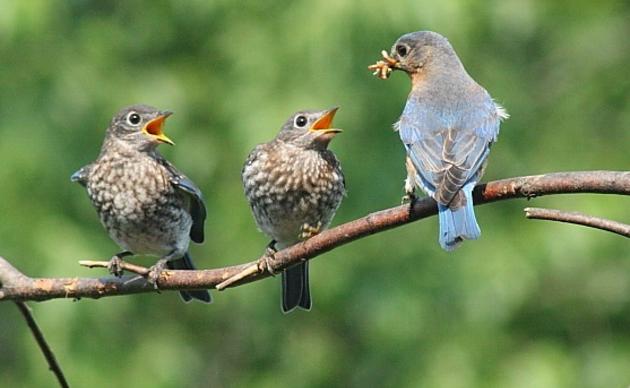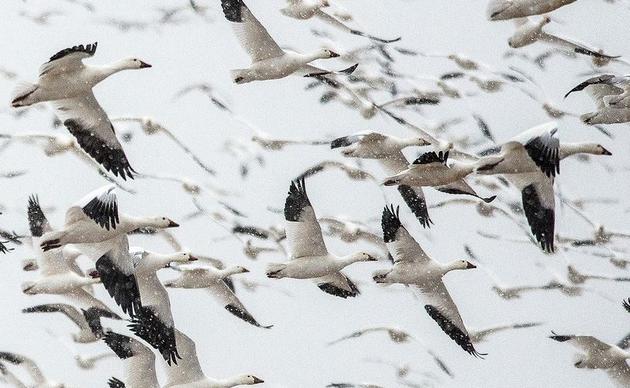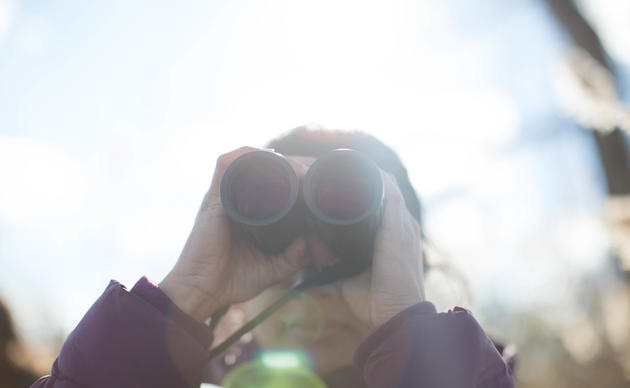Story originally published by The Daily Mail, by Jim Planck
May 7, 2016
Every spring, bird lovers watch for the return of all the species that went south for the winter, and among the most treasured of them are the numerous species of wood warblers.
There are two main reasons for this, the first being that a number of them live further north than New York’s Hudson Valley and Catskill Mountain region, so their northern migration is the only short window of opportunity to see them in the glorious color of their spring plumage — they molt and change to a duller, drab autumnal plumage for the flight south, which they wear for the winter.
These northern ones include the beautiful Bay-Breasted Warbler and the Blackburnian Warbler, with the first being a striking combination of russet, creamish yellow-white, black, and white, and the second a mixture of fiery orange-red, bright orange, bright yellow, black, and white, and both of which, once seen, are never to be forgotten.
It is such color combinations that have earned the wood warblers nicknames like gems of the forest and butterflies of the birds, with ornithologists consistently writing about them that way.
At the turn of the 20th century, William Leon Dawson, in his 1903 work, “The Birds of Ohio,” wrote, “One of the reasons why we are so fascinated by this group of little birds may be because it is wholly American,” as the wood warblers are found only in the Americas and their adjacent islands of the Western Hemisphere.
For their passage during migration, Dawson spoke of both their beauty and their mystery.
“They come and go like fairies, now adding color to the May foliage and making merry in the woods, now as silently and mysteriously stealing away as they came,” he said.
Professor Charles J. Maynard, of West Newton, Massachusetts, perhaps said it best in his 1905 work, “The Warblers of New England.”
Maynard described warblers as “a family of birds, the members of which — presenting as they do, bright and beautiful patterns of coloration, and singing, as they do, quaint and often sweet songs — are, among all the attractive songsters of coppice and woodland, preeminently the gems.”
Noted turn of the century ornithologist and field guide author Frank M. Chapman, writing from the American Museum of Natural History, makes a similar comparison in the preface to his “The Warblers of North America,” published in 1907.
“The warblers have been described as ‘our most beautiful, most abundant, and least known birds’,” wrote Chapman.
“The knowledge that at certain seasons,” he said, “our woods, and even the trees of our larger city parks, are thronged with an innumerable host of birds — the brilliancy of whose plumage rivals that of many tropical species —comes to the bird student with the force of a surprising discovery.”
“One never forgets one’s first warbler!” wrote Chapman.
Northern Catskills Audubon Society President Larry Federman said Tuesday those sentiments are absolutely correct.
“I agree with the moniker that the warblers are the butterflies of the birds,” Federman said.
The opportunity to see these beautiful birds — both the migrants and the locals — is now.
“They’re starting to come through,” Federman said. “We are getting close to the peak of warbler migration time.”
“You find warblers in every habitat,” Federman said. “There’s a lot of forest dwelling species, like the Ovenbird, the Black-Throated Blue, and the Black-Throated Green.”
“In wetlands, there’s the Common Yellowthroat and the Yellow Warbler,” he said, “and in grasslands there’s the Prairie Warbler, while in shrub and scrub habitat — early successional young forest — it’s the Blue-Winged Warbler.”
“Redstarts are very common,” Federman said, “as are Ovenbirds — you can hear their call resonating through the forest — Teacher, Teacher, Teacher!”
He also said there are Blackburnians nesting at Audubon’s Rheinstrom Hill Sanctuary, in Columbia County.
For those who may wish to see and hear some of these warblers, Federman, who is also a retired Education Coordinator for three area Audubon New York sanctuaries, regularly leads birding trips at the Ramshorn-Livingston Sanctuary, in Catskill.
The “Spring Bird Walks” are typically on Wednesday mornings, and leave from the sanctuary parking lot at the end of Grandview Avenue at 7:30 a.m.
Participants should bring binoculars and wear sturdy shoes, and there is a $10 fee per person.
“The walks are approximately three hours when it’s very, very ‘birdy,” Federman said.
“The last week we were out until noon,” he said, “and we had 52 species — not all warblers — and that included 10 Bald Eagles.”
Upcoming walks at Ramshorn with Federman are on May 11 and 18, both Wednesdays, plus on Saturday, May 28.
He will also lead a bird walk at the Mountaintop Arboretum, near Tannersville, on Saturday, May 21, which begins at 8 a.m.
For more information on the walks, call (518) 678-3248.



